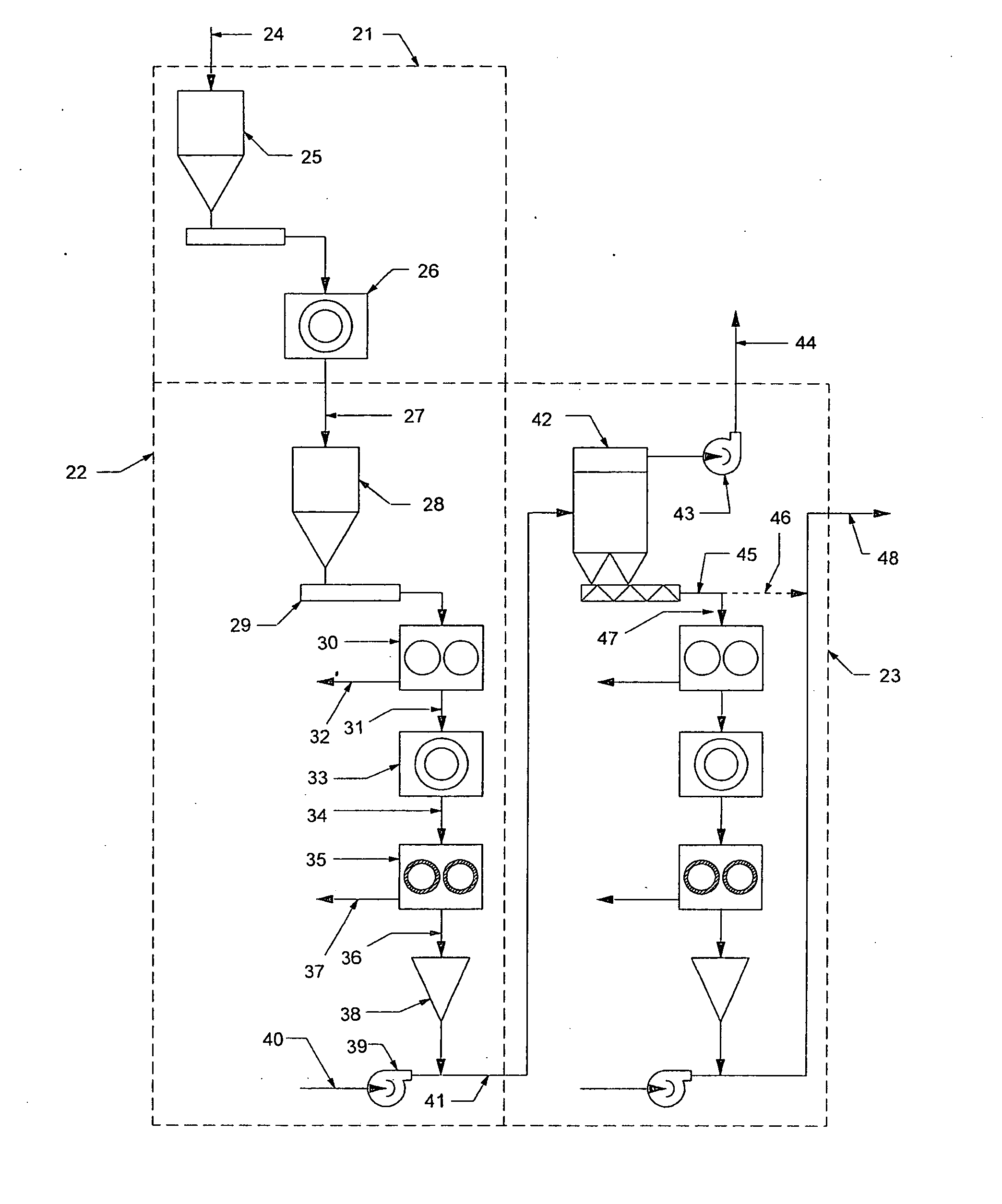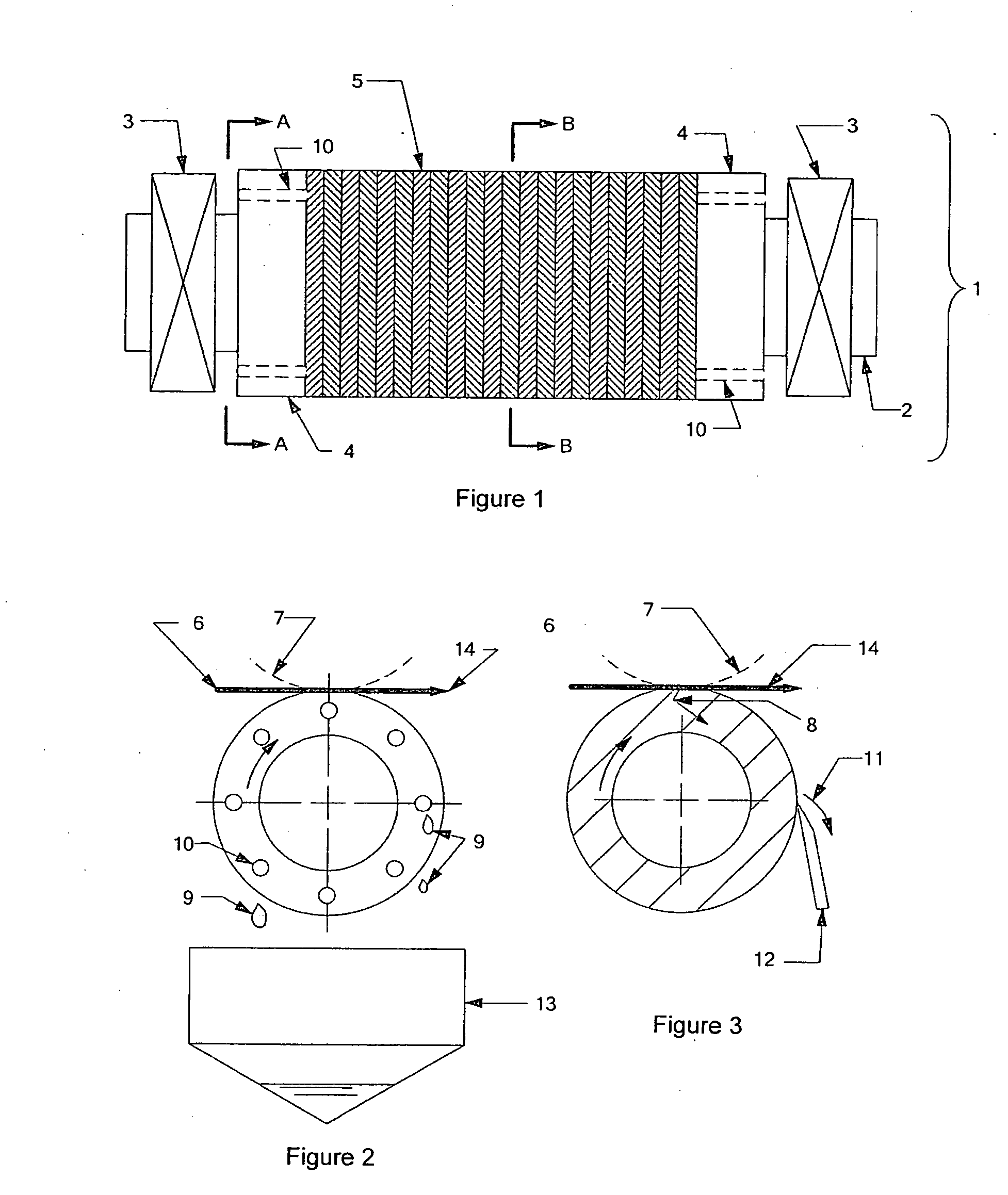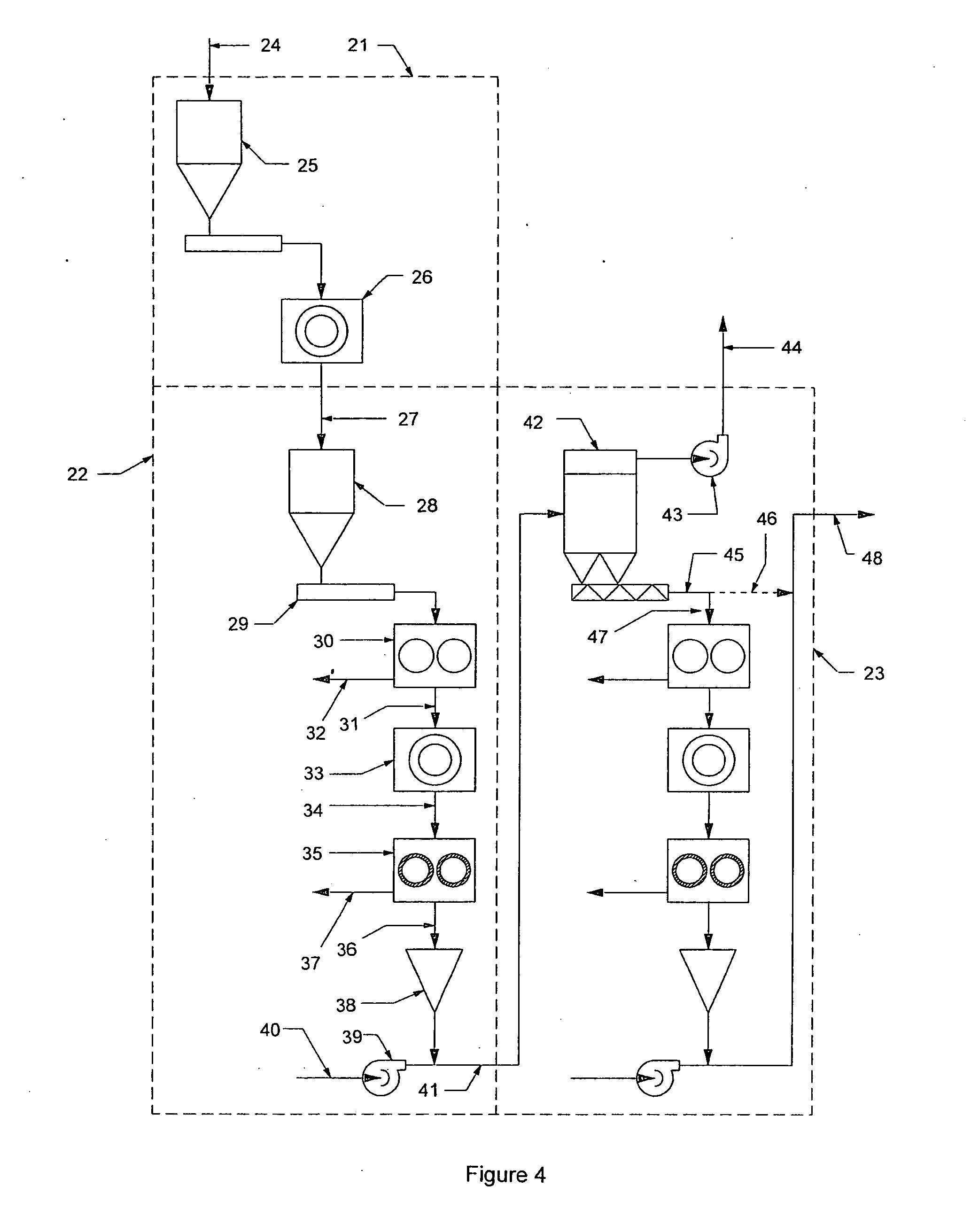Method to transform bulk material
a bulk material and non-thermal technology, applied in the field of low-cost, non-thermal methods to transform and beneficiate bulk materials, can solve the problems of unacceptably dangerous fuel products, site restrictions, and high construction costs, and achieve the effects of preventing their recapture, fewer deleterious components, and high energy
- Summary
- Abstract
- Description
- Claims
- Application Information
AI Technical Summary
Benefits of technology
Problems solved by technology
Method used
Image
Examples
example 1
[0052] A detailed study two bulk materials (high-moisture lignite from South Australia and brown coal from Victoria, Australia) was undertaken to assess the effects of particle size, washing and leaching, additives, agglomeration, briquetting, slurrying, rehydration, autoclaving, and the application of thermal energy and pressure, as effective methods of transforming or beneficiating low rank coal (LRC) to provide a more useful, cost effective, clean fuel. The test program revealed comminution to a specific particle size range and compaction, configured in the continuous mode of the present invention to be the most beneficial factors in the mechanical transformation of LRC into a high quality fuel.
[0053] Published reports (Anagnostolpoulos, A., Compressibility Behaviour of Soft Lignite, J. Geotechnical Engineering 108(12): (1982); and Durie, R. Science of Victorian Brown Coal: Structure, Properties and Consequences of Utilisation, CSIRO, Sydney, Australia (1991)) dealing with simil...
example 2
[0055] Various LRC samples were processed using the procedures and equipment diagramed in FIG. 1 and described above. The effects of these mechanical transformation processes and the quality of the finished compacted products were evaluated.
[0056] To evaluate the transformative effects and the quality of the finished products, the equilibrium moisture content (EQM) of LRC feeds and products was measured. The EQM is defined by the American Society of Testing and Materials (ASTM) procedure ASTM D-1412. The EQM is the moisture content held by coal stored at a prescribed temperature of 30° C. under an atmosphere maintained at between 96% and 97% relative humidity. Under these conditions, moisture is not visible on the surface of the coal, but is held in the capillary, pores, or other voids. Coals with low EQM contain less capillary, pores, or other void volume to hold water. These coals have typically more useful thermal energy than coals with higher EQM, and are subsequently more valu...
PUM
| Property | Measurement | Unit |
|---|---|---|
| Fraction | aaaaa | aaaaa |
| Fraction | aaaaa | aaaaa |
| Fraction | aaaaa | aaaaa |
Abstract
Description
Claims
Application Information
 Login to View More
Login to View More - R&D
- Intellectual Property
- Life Sciences
- Materials
- Tech Scout
- Unparalleled Data Quality
- Higher Quality Content
- 60% Fewer Hallucinations
Browse by: Latest US Patents, China's latest patents, Technical Efficacy Thesaurus, Application Domain, Technology Topic, Popular Technical Reports.
© 2025 PatSnap. All rights reserved.Legal|Privacy policy|Modern Slavery Act Transparency Statement|Sitemap|About US| Contact US: help@patsnap.com



